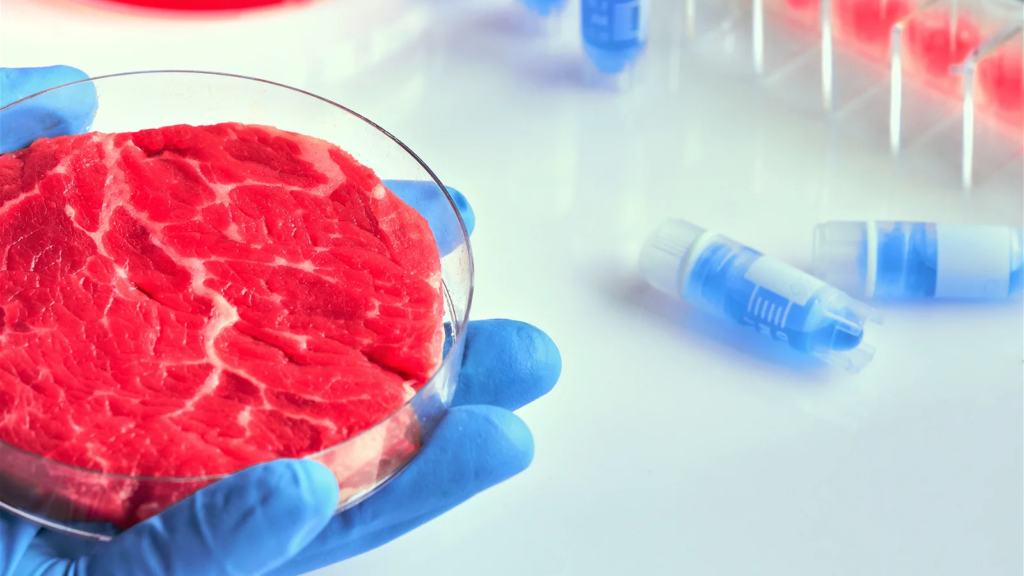Tomorrow’s table: The unexpected foods you might soon try

Opinions expressed by Digital Journal contributors are their own.
Have you ever wondered what food might look like in the future? It’s not just talking about new recipes, but a whole new way of making food. It’s 2013, and Professor Mark Post just unveiled something that would start a revolution in everyone’s kitchens: the world’s first lab-grown burger. Picture this: 20,000 protein strands coming together to form a burger, not from a farm, but from a lab.
At first, food critics were sceptical. But this was just the beginning. Since then, companies have been making huge strides in making lab-grown meats more affordable and exploring how these innovations could lead towards a more sustainable and ethical way of eating. Imagine a world where your steak or seafood doesn’t come from a field or the ocean, but from a lab or a 3D printer, each piece custom-made for your nutritional needs.
It is time to delve into the future of food where science meets cuisine, where traditional farming takes a backseat, and a new era of sustainable, ethical, and personalized eating takes centre stage. Are you ready to explore what might be on your plate in the not-so-distant future?
The growing need for alternative food sources
We’re heading towards a population of 9 billion people by 2050. That’s a lot of mouths to feed. And with the way food is currently produced, you’re looking at some serious environmental challenges. The U.N. Food and Agriculture Organization (FAO), tells everyone that the current farming methods are a big problem — they’re causing air pollution, climate change, and a loss of biodiversity. This is where lab-grown food comes in as a game-changer. It promises more food with less environmental damage. The key? Making it affordable on a large scale.
As more countries develop, their appetite for meat is growing too, just like it did in North America and Australia. But more traditional meat production means more emissions, which harms the ecosystem we rely on for growing the food in the first place.
Lab-grown meat: A tasty solution?
Many companies are working on growing meat in labs — no animals involved. This isn’t just good news for the animals. It means a massive drop in greenhouse gas emissions and using way less land than traditional farming. The process is pretty sci-fi: take some stem cells from an animal, put them in a special growing environment, and voilà, you’ve got “cultured meat.” It’s not quite at the point of creating a perfect steak this way, but for things like burgers and chicken nuggets, it’s getting there. In about five years, you might even find these lab-grown options in your local grocery store.
Fish without the ocean?
Then there’s seafood. Companies worldwide are doing for fish what those burger scientists are doing for beef. They’re growing fish muscle cells in labs. This method could give us seafood without the contaminants — like mercury and plastics — that you find in the ocean. It’s still early days for this technology, but it’s an exciting glimpse into what the seafood future could look like.
Smart Food: The next nutritional leap
Now, time to talk about “Smart Food.” This isn’t just about convenience, it’s about nutrition. Companies around the world are working on foods that are not only easy to prepare but also perfectly tailored for your health. Think meal replacements that give you exactly what your body needs. There’s even talk of using microchips to customize our food needs in the future. Sounds like something out of a sci-fi movie, right?
3D-printed foods: The customizable cuisine
3D printing isn’t just for making plastic models anymore. It is being used now to print food. Yes, you heard that right. You can use 3D printers to create plant-based meats that are tailored to individual dietary needs. The challenge is making these printed foods taste, feel, and look like the real deal. But the technology is improving fast, and it’s getting closer every single day.
Looking to the future: Food as medicine and eco-friendly options
As you move forward, you’re going to see a bigger focus on food that’s good for your health and the planet. People are starting to eat less meat, driven by concerns about animal welfare, their own health, and the environment. The market for alternative proteins — think algae milk or cricket flour — is set to grow big time.
Eventually, you might be sitting down to a perfect, 3D-printed steak or tuna fillet that’s not just delicious but also completely sustainable and cruelty-free.
What’s on your future plate?
So, what do you think about all this? Are lab-grown meats and 3D-printed foods the future of food? How do you see these innovations changing the way you think about what you eat? The future of food is not just about what you eat, but how it’s made, and it’s definitely going to be an exciting journey.
Tomorrow’s table: The unexpected foods you might soon try
#Tomorrows #table #unexpected #foods





